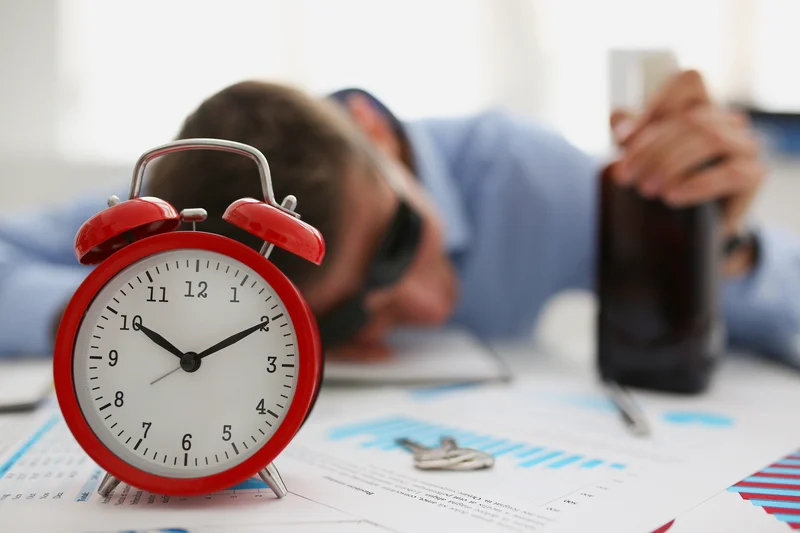
This complex interplay between Post-Traumatic Stress Disorder (PTSD) and Alcohol Use Disorder (AUD) represents a significant challenge in the realm of mental health and addiction treatment. PTSD, a mental health condition triggered by experiencing or witnessing a terrifying event, can leave individuals struggling with intrusive memories, nightmares, and severe anxiety. On the other hand, AUD, commonly known as alcoholism, is characterized by an impaired ability to control alcohol consumption despite adverse consequences. One 2020 study found that people who experienced childhood trauma, particularly emotional and physical abuse, had a statistically higher lifetime rate of AUD. Individuals with CPTSD may use substances like alcohol or drugs to cope with their emotional distress and ptsd and alcohol abuse psychological symptoms resulting from prolonged trauma exposure.
Mental Health and Loneliness
Your journey toward sobriety is a courageous and empowering one, and you are not alone. Seeking professional support is a significant stride towards a healthier, brighter future. It can be a way to unwind after a long day, celebrate special occasions, or simply enjoy the company of friends and loved ones. However, beneath Drug rehabilitation the surface of what might seem like harmless social drinking lies a complex web of behaviours and consequences that can lead to Alcohol Usage Disorder (AUD).
- It can lead to social isolation, financial difficulties, and legal problems.
- The endorphin compensation hypothesis (ECH) suggests that when people drink alcohol after traumatic events, the alcohol makes up for the lack of endorphin activity (Volpicelli 1987).
- Certain demographic groups are particularly affected by the dual burden of PTSD and alcoholism.
- The Recovery Village is experienced in treating alcohol and other substance use and co-occurring disorders like PTSD.
- Both conditions affect similar brain regions and neurotransmitter systems, particularly those involved in stress response and reward processing.
- Among populations characterized by PTSD, there is growing evidence that positive emotions may elicit aversive reactions and thus be intentionally reduced, including via alcohol use.
Treating both PTSD and SUD

People with PTSD may turn to alcohol as a way to cope with the distressing symptoms they experience. Alcohol can provide temporary relief from anxiety, sleep disturbances, and intrusive thoughts or memories. However, using alcohol as a coping mechanism can lead to a dangerous cycle of dependence and worsen the symptoms of both disorders.
Psychedelic-Assisted Therapy
- The endorphin compensation hypothesis assumes that people use alcohol following a traumatic experience in an attempt to relieve the endorphin deficiency.
- Through a combination of therapy, support, and a strong commitment to personal growth, the survivor was able to rebuild their life and find renewed purpose.
- In this double-blind, placebo controlled study the main outcomes were PTSD symptoms, response to stress reactivity, and alcohol craving in the laboratory.
In the Faces subtest, the participant is asked to remember photographs of faces and then is shown a series of faces and must identify whether the face was one he or she was asked to remember. For the Family Pictures subtest, the participant is shown scenes with family members and asked to remember aspects of the scene. Whereas Faces is a test of recognition, Family Pictures is a test of recall, but low scores on both indicate memory deficits with visually presented material. For Faces II and Family Pictures II, which make up the Visual Delayed Index, participants are asked to identify or recall the faces or family pictures 30 min later. Visual–spatial skill was assessed by using the Block https://ecosoberhouse.com/article/sobriety-sucks-you-will-definitely-feel-better/ Design subtest of the WAIS–III, which requires the participant to replicate pictures of geometric patterns with two-color blocks. Participants completed the SCL-90-R, a 90-item self-report clinical rating scale of psychiatric symptomatology.
Risks of Alcohol Misuse
- Post-traumatic stress disorder is a serious mental health condition triggered by traumatic events.
- Difficulty with recruitment may be another reason investigators have included subjects who are taking other psychotropic medications even though this complicates the interpretation of results.
- Desipramine (and the other tricylic antidepressants) are considered second line medications by the VA/DoD Clinical Practice Guidelines (The Management of Substance Abuse Use Disorders Working Group 2009).
- Before these developments, sequential treatment was the only form of behavioral intervention employed.
- We are not aware of other studies that have specifically investigated neuroimmune factors in PTSD in the context of AUD, which precluded any comparisons to the literature.
In adults, the rates for co-morbid PTSD and substance use disorders are two to three times higher for females than males, with 30 to 57 percent of all female substance abusers meeting the criteria for PTSD (Najavits et al. 1997). Women’s increased risk for co-morbid PTSD and substance dependence is related to their higher incidence of childhood physical and sexual abuse. For example, in a group of adolescents, a history of sexual abuse increased the risk of problem drinking to 20 times the normal rates of alcohol abuse for both sexes. However, females were much more likely to have been sexually abused than males and consequently the symptoms of PTSD were more common for female than male alcohol abusers (Clark et al. 1997). For instance, it may be that the functional association between PTSD and AUD varies based on both the form of trauma exposure and the type of substance use disorder. Evidence-based pharmacological treatments for alcohol use disorders (AUDs) evaluated in well-designed clinical studies are not being adopted in clinical treatment settings as evidenced by the low uptake of the use of medications to treat AUD (Jonas et al. 2014).
Verbal and working memory difficulties were more prominent than visual impairments in veterans with PTSD. Although the majority of studies show deficits in chronic or recently detoxified alcoholics, some studies have found neuropsychological problems to persist after the acute withdrawal period. Cross-sectional studies of recovering alcoholics who have been abstinent for several years have shown impairment particularly in visual–spatial tasks (Brandt, Butters, Ryan, & Bayog, 1983; Fama, Pfefferbaum, & Sullivan, 2004). A review of longitudinal studies (Parsons, 1996) showed that although neuropsychological performance improves over time in abstinent alcoholics, recovering alcoholics still show significant differences from control groups at retesting for several years. These studies illustrate the continued debate surrounding the long-term effects of alcoholism on neuropsychological functioning. The unfortunate consequence of PTSD and alcohol abuse is often a worsening of PTSD’s symptoms.

Recent Posts

Post hoc analyses of group effects were made for each analysis, adjusting for multiple comparisons by using a modification of Bonferroni’s method for correlated multiple outcomes, grouping together these domain variables (Sankoh, Huque, & Dubey, 1997). Our four-group model accounts for alcohol abuse history in the past 5 years but may not adequately account for current alcohol use. Therefore, we next conducted analyses on variables previously seen to be significantly different between groups that were PTSD+ and PTSD–, covarying for level of current alcohol use determined by total drinks in the past 3 months on the LDH. We also conducted ANCOVAs on all neuropsychological measures, comparing participants with lifetime histories of drug dependence or abuse with participants without drug dependence or abuse. If any differences were detected, we then entered drug history as a covariate to determine if any previously significant differences seen between groups that were PTSD+ and PTSD– remained after controlling for drug history.
